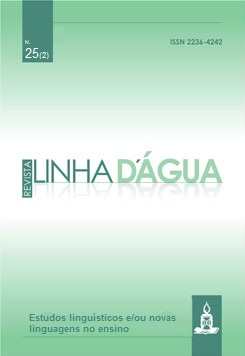The representation of the country man in Patativa do Assaré under the perspective of post-colonial theory
DOI:
https://doi.org/10.11606/issn.2236-4242.v25i2p91-106Keywords:
Cultural and Post-Colonial studies, Brazilian literature, Patativa do Assaré, Social representation, Cultural identity.the representation of the country man in patativa do assaré under the perspective of post-colonial theoryAbstract
In this article, we aim to study and analyze the representation of the country man in the poetry of Antonio Gonçalves da Silva, popularly known as Patativa do Assaré. From the perspective of Gayatri Chakravorti Spivak and other theorists - as Frantz Fanon, Homi K. Bhabha and Edward Said, particularly with regard to cultural identity – we propose a new approach to the construction of poetic voice and image of the frontiersman in the main works of Assaré. Thus, the article will be built through studies related to the issue of culture, identity and its representations in the literature. We believe that, with this, we can understand better the figuration of the poetic voice of Assaré in the context of its space and how this voice can somehow represent the class of the disadvantaged or the subordinated ones.Downloads
Downloads
Published
Issue
Section
License
The Editorial Board authorizes free access to and distribution of published contentes, provided that the source is cited, that is, granding credit to the authors and Linha D'Água and preserving the full text. The author is allowed to place the final version (postprint / editor’s PDF) in an institutional/thematic repositor or personal page (site, blog), immediately after publication, provided that it is available for open access and comes without any embargo period. Full reference should be made to the first publication in Linha D'Água. Access to the paper should at least be aligned with the access the journal offers.
As a legal entity, the University of São Paulo at Ribeirão Preto School of Philosophy, Sciences and Languages owns and holds the copyright deriving from the publication. To use the papers, Paidéia adopts the Creative Commons Licence, CC BY-NC non-commercial attribution. This licence permits access, download, print, share, reuse and distribution of papers, provided that this is for non-commercial use and that the source is cited, giving due authorship credit to Linha D'Água. In these cases, neither authors nor editors need any permission.
Partial reproduction of other publications
Citations of more than 500 words, reproductions of one or more figures, tables or other illustrions should be accompanied by written permission from the copyright owner of the original work with a view to reproduction in Linha D'Água. This permission has to be addressed to the author of the submitted manuscript. Secondarily obtained rights will not be transferred under any circumstance.










